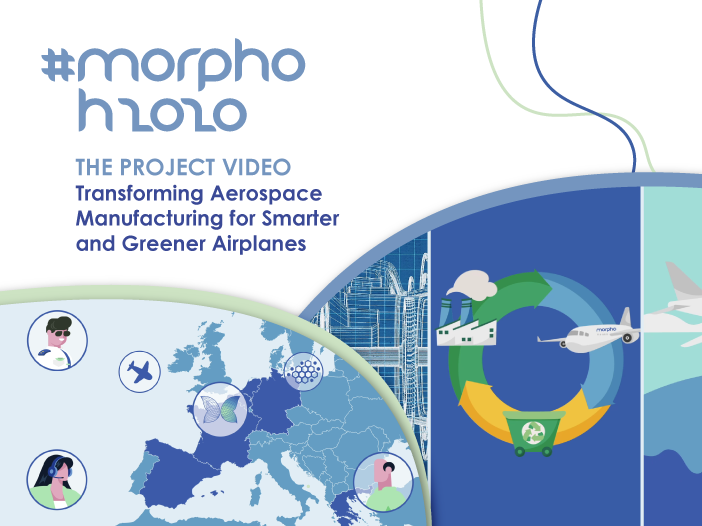
Welcome to the fascinating world of the MORPHO project! In this exciting video, you will be introduced to our groundbreaking initiative funded by the European Union Horizon 2020 programme. Led by Arts et Métiers, a visionary captain, and supported by a dynamic crew of 10 partners from six European countries, the MORPHO project sets its sights on revolutionizing the aerospace industry’s future of manufacturing.
Modern airplanes, as we learn, are masterpieces constructed from a blend of materials, including metals and composites. The project acknowledges the strength and durability of metals like aluminum and titanium, which are commonly used for structural components such as wings, fuselages, and engines. However, the real game-changer is the utilization of composites, particularly carbon fiber, renowned for its remarkable strength-to-weight ratio. By incorporating hybrid metal-composite parts, the project aims to make airplanes smarter, more efficient, and environmentally friendly, requiring less fuel to fly.
Carbon fiber, a material thinner than human hair yet thousands of times stronger, takes center stage in the MORPHO project. The team envisions innovating manufacturing designs and testing a new generation of intelligent and multifunctional aeronautic parts. Key experiments are conducted on a Foreign Object Damage preform, representative of an engine fan blade, crafted with carbon fiber.
An important challenge the project addresses is the recycling of carbon fibers. Historically, these fibers have been difficult and costly to recycle, often ending up in landfills. MORPHO seeks to change this by developing new processes for the disassembly and recycling of hybrid metal-composite parts. A combination of laser-induced disassembly and pyrolysis technology offers a promising solution for reducing the cost of future aircraft parts and aligning them with the principles of the circular economy.
Additionally, the project delves into the realm of adhesively bonded joints, where glue is used to assemble aircraft parts. Such strong bonds have posed obstacles during repairs and recycling. However, the MORPHO team pioneers a novel approach using a newly developed laser shock technique. This technique generates powerful shock waves that effectively break the glue, facilitating disassembly without damaging the parts.
MORPHO’s innovation extends beyond materials and recycling processes, as it endeavors to make airplane parts smarter and more responsive. With a goal to reduce the time required for aircraft repairs by 50%, the project embraces Industry 4.0 technologies. Embedded printed and optical fiber sensors become the nerves of airplane composite parts, measuring essential parameters such as temperature, pressure, and vibrations. This intelligence empowers the parts to detect potential issues early on, providing warnings to ensure prompt and efficient maintenance.
Moreover, the project delves into creating computer models that enhance our understanding of how panels function and how to optimize their care. These models serve as valuable tools in ensuring the longevity and safety of the airplane’s components.
In conclusion, the MORPHO project represents a pioneering step forward in the aerospace industry, promising safer and more efficient airplanes. By embracing advanced materials, recycling processes, and cutting-edge technologies, MORPHO enables us to explore the world with greater ease and joy. With these remarkable improvements, the future of aerospace is set to soar to new heights!